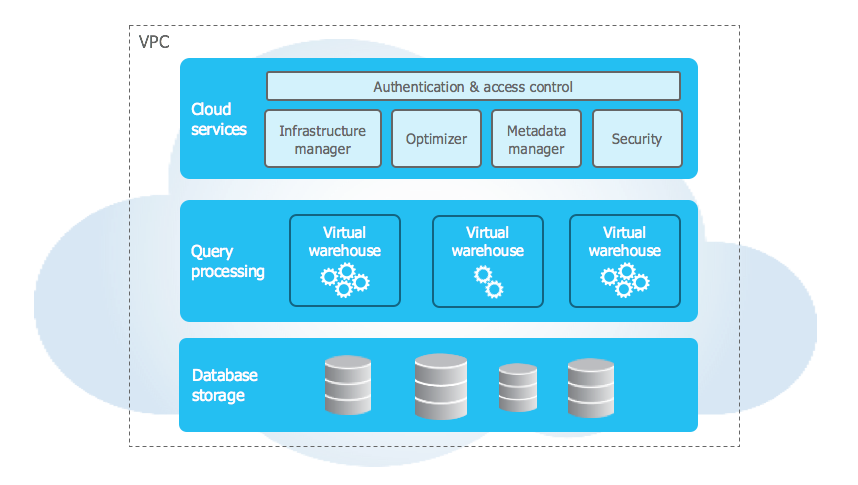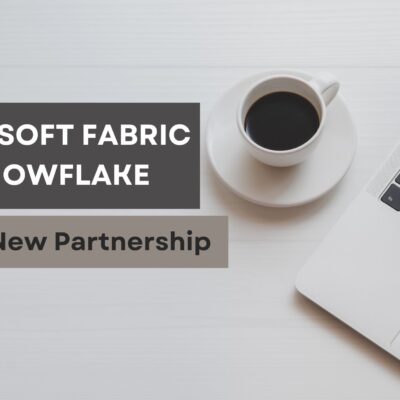Snowflake 101: Why Choose Snowflake Cloud Data Platform for your Business?

This blog is the first in the series of articles on Snowflake. In this blog, let’s take a look at the basics of Snowflake Cloud Data Platform and why businesses should choose Snowflake for managing their data.
What is Snowflake Cloud Data Platform?
Snowflake Cloud Data Platform is a cloud-based data warehousing platform that helps businesses store and analyze their data in a secure and scalable way. Snowflake simplifies the complexities of traditional data warehousing by offering a fully managed, scalable, and elastic solution. The architecture of Snowflake is unique that it decouples storage and compute resulting in a flexible and scalable solution. Snowflake provisions compute resources as virtual warehouses, allowing the centralized object store to store massive amounts of data without requiring scaling the virtual warehouses up or down. This separation saves businesses money, increases concurrency and enhances performance and efficiency, as organizations can allocate resources precisely when needed without over-provisioning.
Snowflake Platform Architecture
Snowflake’s architecture consists of three layers – Database Storage, Query Processing and Cloud Services.

Storage Layer
The storage layer securely holds all the data. This layer, known for its high security, allows accessing the data through SQL queries executed via Snowflake. The data is stored in a column format in this layer, which enhances query performance. This improvement occurs because only the specific columns required for a query are read, reducing the amount of accessed data and enhancing overall efficiency.
Compute Layer
This layer is also known as the Virtual Warehouse. This layer is responsible for processing SQL queries, executing analytical workloads, and handling computational tasks. Every warehouse consists of many compute nodes and forms a compute cluster. It does not share resources with other warehouses. You can easily scale up or down these virtual warehouses based on the processing requirements of the workload. That’s not all! They can also be auto-resumed and auto-suspended. Snowflake incorporates a multi-cluster design and shared data architecture which enhances enhances collaboration among users.
Cloud Services Layer
This layer is responsible to provide coordination, orchestration, and governance functionalities. This layer stores all metadata and information about databases, tables, schemas, and user roles. Additional services managed by this layer include encryption, access control, and authentication. Businesses can take advantage of special tools to understand and optimize their resource usage.
Five Reasons Why Businesses should consider Snowflake
There are several compelling reasons why a business might consider switching to Snowflake. Snowflake provides a user-friendly interface that caters to both technical and non-technical users, enabling rapid deployment and ease of use. Its support for multi-cloud environments, stringent security features, and compliance capabilities make it a robust solution for businesses aiming to harness the full potential of their data. Snowflake empowers businesses to break free from traditional data warehousing constraints, making data analytics more accessible, scalable, and cost-efficient.
Scalability
Snowflake’s separate storage and compute layers allow you to scale each of them independently. This flexibility means businesses can adapt to changing data volumes and analytical workloads, scaling up or down based on demand without compromising performance or incurring unnecessary costs. Say, you are an online eCommerce business and your website is experiencing peak loads during Thanksgiving holiday season. This is where Snowflake’s scalability helps your business to handle the unusual quantity of orders in an effective manner. This helps orders to get processed quickly and keeps customers satisfied.
Elasticity
Snowflake’s pay-as-you-go pricing model ensures that businesses only pay for the resources they actually use during query execution. The separation of storage and compute also contributes to cost efficiency, as organizations can optimize their spending by scaling resources precisely to their needs. This is perfect for businesses with fluctuating data workloads.
Concurrency
Snowflake’s architecture supports high concurrency, allowing multiple users or workloads to access and analyze data simultaneously without performance degradation. Think of this problem – in a restaurant, there are many tables but just one waiter. Delays in delivering orders would make customers unhappy as they take forever to reach them. Snowflake acts like multiple waiters ready to serve multiple tables at the same time. This means many users can access and analyze data simultaneously without impacting each other’s performance. This fosters better collaboration and knowledge sharing between users.
Multi-Cloud Support
Snowflake’s robust support for multi-cloud environments enables businesses to deploy Snowflake across different cloud platforms, providing flexibility, resilience, and avoiding vendor lock-in. Businesses can choose from different cloud providers like Amazon Web Services (AWS), Microsoft Azure, and Google Cloud Platform (GCP) that aligns best with their specific requirements and strategies. Businesses also have the option of distributing the data and workloads across multiple cloud environments to ensure resilience and minimize downtime in case of disruptions in one cloud provider’s region.
Security and Compliance
Snowflake encrypts data using industry-standard algorithms and key management practices. This protects sensitive information from unauthorized access. The platform is also compliant with various industry regulations (e.g., GDPR, HIPAA, PCI DSS, SOC 2, and FedRAMP), making it suitable for businesses operating in highly regulated environments. Fine-grained access control mechanism allows businesses to set up roles and permissions for users, ensuring only authorized users can access specific data objects. Additionally, Snowflake also offers extensive logging and auditing capabilities which enable businesses to track user activity, monitor potential security risks, and demonstrate compliance during audits.
Start your journey with Snowflake Cloud Data Platform today!
Fed up with messy data holding back your business insights? Snowflake’s data warehouse in the cloud gives you the ability to scale up, stay secure, and be alert with your data. You can analyze big piles of data really quickly, make smart decisions right away, and work smoothly with your team. Ready to embark on your data journey? VNB Consulting is your trusted partner and we are here to help! We’ll guide you through every step, from migration and implementation to best practices and ongoing support. Click here to schedule a free consultation and unlock the true potential of your data with Snowflake!


